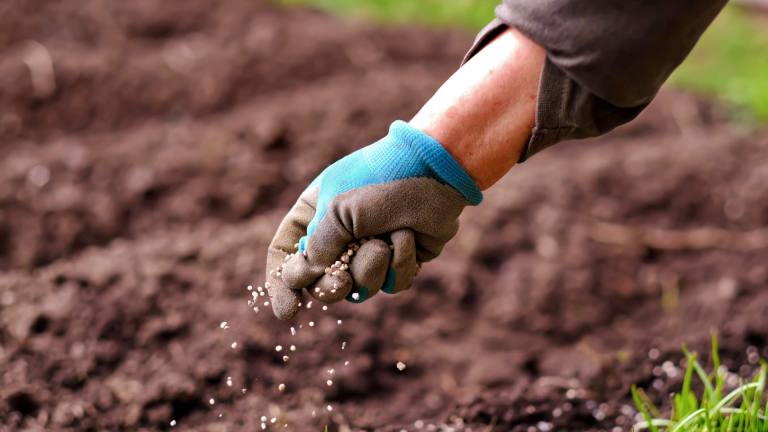Good soil is the heart of a healthy garden. If your soil is weak, your plants will struggle. I’ve learned this the hard way. Over time, I found some easy ways to make my garden soil better. You don’t need fancy tools or expensive products. Just a few simple changes can make a big difference.
In this post, I’ll share the tips that helped me the most. These are things anyone can try, even if you’re new to gardening. The best part? Most of these ideas use things you may already have at home.
Healthy soil holds water better, feeds your plants, and helps roots grow deep and strong. It’s the base for flowers, vegetables, and everything in between. Let’s take a look at some easy ways to boost your soil and give your garden the support it needs.
What It Means to Enrich Soil
Soil enrichment means making your soil better so your plants can grow strong and healthy. Soil gives plants what they need—food, water, and a place to grow roots. But soil can get tired.
After a while, it may not hold water well. It may not have enough food for the plants. That’s when your garden starts to struggle. I’ve learned that good soil isn’t just about dirt. It’s alive.
It holds tiny bugs, worms, and nutrients that help everything grow. When I started gardening, I didn’t know that. My plants looked weak. The leaves turned yellow. Nothing seemed to work. That’s when I found out that enriching soil is one of the most important parts of gardening.
Why Soil Loses Its Power Over Time
You might think soil will always stay the same. But it changes. Every time you plant something, the roots take nutrients from the soil. When it rains, some of those nutrients wash away.
When you dig or walk on the soil, you press it down. It gets tight, and the air can’t move through it. That makes it harder for roots to grow. If you plant the same crops every year, they take the same things from the soil over and over again.
After a while, the soil runs out of that type of food. The plants stop growing well. Your garden may get dry and dusty. Or it may stay too wet and heavy. All of this means the soil needs your help.
How to Know My Soil Needs Help
Not sure why your plants look weak or slow? Your soil might be the problem—here’s how to tell it needs help.
1. Plants Look Weak or Sick
If your plants are small, droopy, or pale, the soil may not be giving them what they need. Yellow leaves, slow growth, or thin stems are big clues. This often means the soil lacks nutrients like nitrogen or potassium.
2. Water Sits on Top and Doesn’t Soak In
When you water your garden, the water should go down into the soil. If it just sits on top or runs off the surface, your soil might be too compact or dry underneath. Healthy soil soaks up water like a sponge.
3. Soil Feels Hard or Crumbly
Try sticking your hand or a small shovel into the soil. If it’s hard to dig, or if the soil breaks apart into dry dust, that’s a problem. Good soil should feel soft and loose, not packed or crusty.
4. Lots of Weeds, But Poor Plant Growth
If weeds grow well but your flowers or veggies don’t, it means the soil might be out of balance. Weeds are strong and can grow in poor conditions. If they’re winning, your good plants are missing what they need.
5. Roots Are Short, Thin, or Brown
When you pull up a plant, look at the roots. They should be long, white, and healthy-looking. If they’re short, brown, or rotten, the soil might be too wet, too dry, or missing key nutrients.
6. Soil Dries Out Too Fast
After you water, the soil should stay moist for a while. If it dries out within a few hours or feels dusty the next day, your soil might be too sandy or missing organic matter like compost.
7. Soil Stays Wet for Days
On the other hand, if the soil stays wet and soggy for too long, that’s also a problem. This could mean poor drainage, compact soil, or too much clay. Wet roots can rot and kill your plants.
Effective Ways to Enrich Garden Soil
Healthy soil helps plants grow strong and full. These easy methods improve soil naturally and keep gardens thriving.
1. Using Compost to Feed the Soil
Compost is my go-to solution. I make it from old leaves, veggie scraps, and coffee grounds that break down over time. It looks dark and smells like fresh earth. Compost adds nutrients and helps the soil stay loose and airy.
Adding compost to garden beds in spring and fall is a simple way to feed the soil. Mixing it into the top few inches is enough—you don’t need to dig deep. A light rake or garden fork does the job. Over time, plants grow better, and the soil holds water longer.
Food scraps like peels, trimmings, and coffee grounds can be turned into compost at home. It’s free, easy, and great for the garden.
2. Worm Castings: A Gentle Soil Booster
Worm castings have become one of my favorite gentle boosters. These are the droppings from worms after they digest organic matter. They are rich in nutrients and gentle on plants. They also help keep the soil soft and moist.
A handful of worm castings in planting holes or sprinkled on top of the soil boosts plant growth. It’s great for flowers, veggies, and potted plants.
Worm castings don’t smell, won’t burn plants, and are easy to use throughout the growing season.
3. Growing Cover Crops to Fix the Soil
When I finish harvesting a bed, I don’t leave it bare – I plant cover crops like clover or peas. These plants grow during the off-season and do wonders underground. They add nitrogen, stop weeds, and keep the soil from washing away.
After harvest, planting a cover crop and cutting it down in spring is a natural way to improve the soil. Mixing it in before planting boosts the garden’s health.
Cover crops are easy to grow and work well every season.
4. Using Kitchen Scraps the Right Way
I’m always saving kitchen scraps to feed the garden, but I’ve learned not to toss them into my beds. Once, I tried that, and it attracted pests and smelled terrible. Throwing them straight onto garden beds can cause smells or attract pests.
Instead, add scraps to compost piles or bury them at least 8 inches deep. This lets them break down safely and feed the roots.
Eggshells, banana peels, and lettuce are great options. Avoid meat or dairy.
5. Rotating Crops to Keep Soil Healthy
One mistake I made early on was planting tomatoes in the same spot every year. Eventually, the soil wore out, and I had more pests than ever. Growing the same plant in the same spot every year can hurt the soil. It uses the same nutrients and invites pests.
Changing plant locations each year—like moving leafy greens, root veggies, and fruits around—helps balance the soil. It also gives the ground time to rest.
Crop rotation keeps plants strong and soil healthy.
6. Trying Rock Dust for Extra Minerals
Rock dust is made from ground-up stone. It adds minerals to the soil that help plants grow strong. It doesn’t work fast, but it’s great over time.
Sprinkling a thin layer in early spring gives plants support through the season. It’s helpful in gardens that are already doing well but need a small boost.
How to Use Aged Manure the Safe Way
Aged manure is full of nutrients and safe for plants when used correctly. Fresh manure is too strong. It can burn roots or bring weed seeds. But after sitting for a few months, it breaks down and becomes safe to use.
Mixing aged horse manure into the soil in fall and waiting until spring to plant allows it to settle and enrich the soil. It becomes dark, soft, and crumbly—just like compost.
Use only a small amount and always wear gloves. A little goes a long way.
Why Mulch Helps Soil Stay Healthy
Mulch is a layer of material like straw, chopped leaves, or wood chips placed on top of the soil. It holds in moisture, keeps weeds away, and breaks down into nutrients.
Adding mulch after the soil warms up in spring helps protect the ground on hot days. It also improves the look of the garden.
Even yard leaves work well when shredded and spread in a 2-inch layer.
Conclusion
Taking care of your soil is one of the best things you can do for your garden. When soil is rich and full of life, plants grow better, flowers bloom brighter, and vegetables taste fresher.
Good soil holds water, gives food to roots, and keeps bugs and sickness away. It doesn’t need to be expensive or hard. Simple things like compost, mulch, worm castings, and cover crops can make a big difference.
It’s also important to pay attention to how your soil looks and feels. If it’s dry, hard, or full of weeds, it may need help. Small steps can lead to big changes. Adding kitchen scraps, planting in new spots, and using natural boosters all help the soil stay strong.
Start slow. Try one or two new things this season. Watch how your garden changes. With a little time and care, your soil will become the perfect home for healthy, happy plants.
















2 Responses
Thank again
I used to go to the beach and collect sea weed My soil became enriched and i had beautifulflowers i also felt that the fallen oak leaves helped my rhoderdenvens (sp)